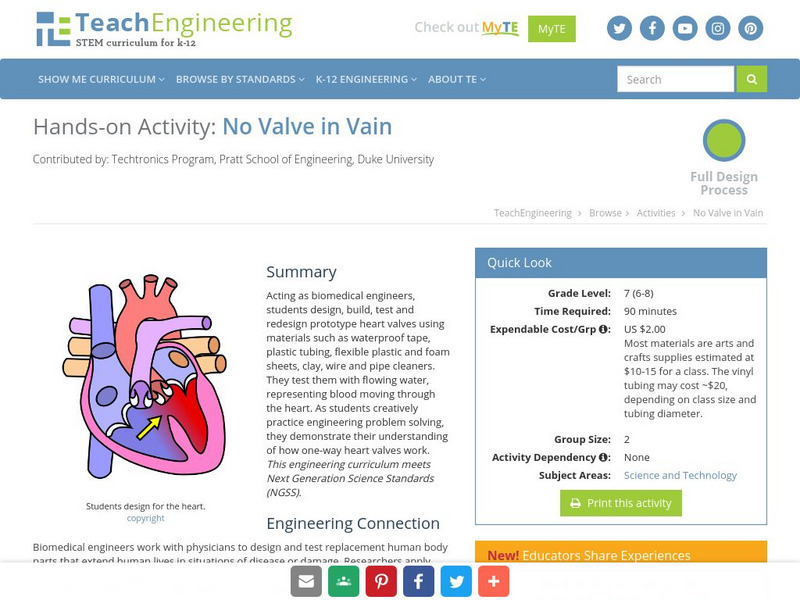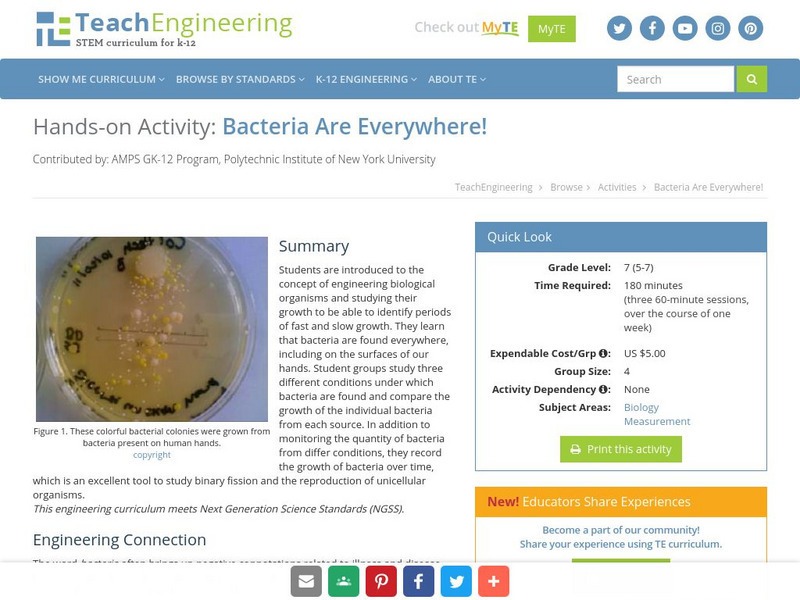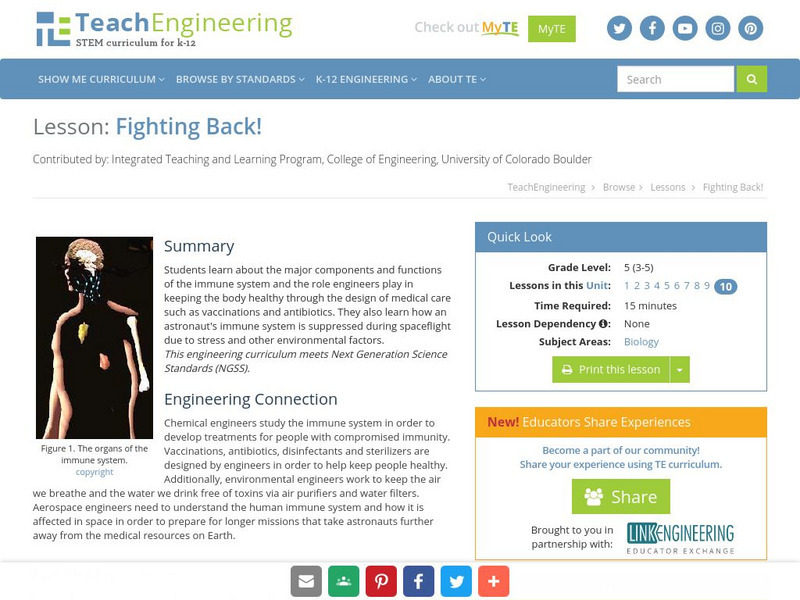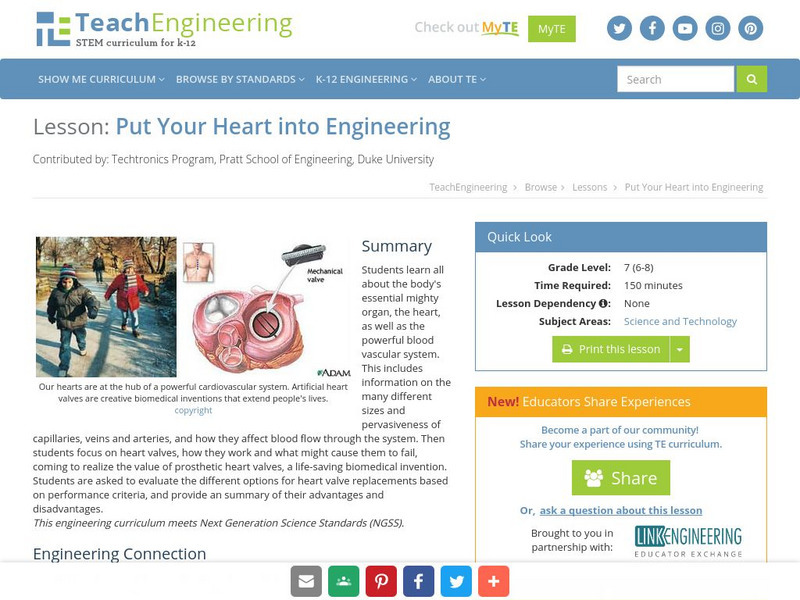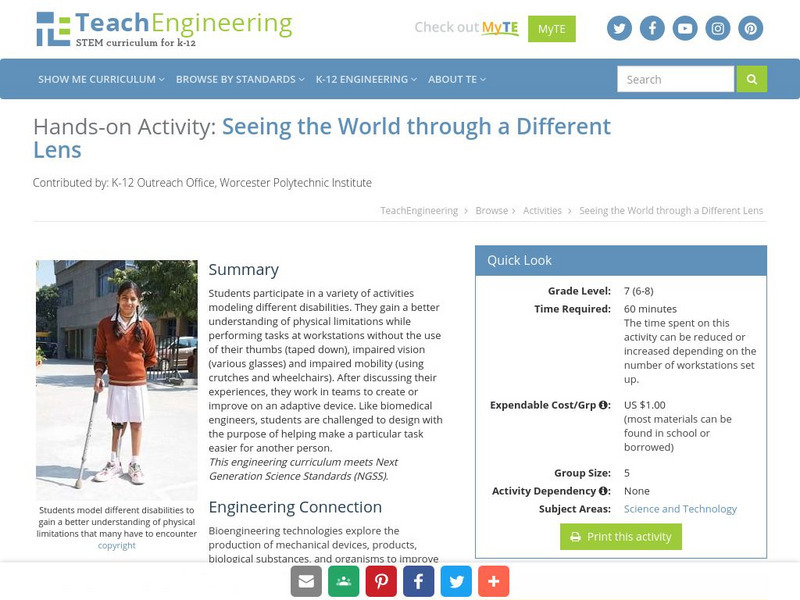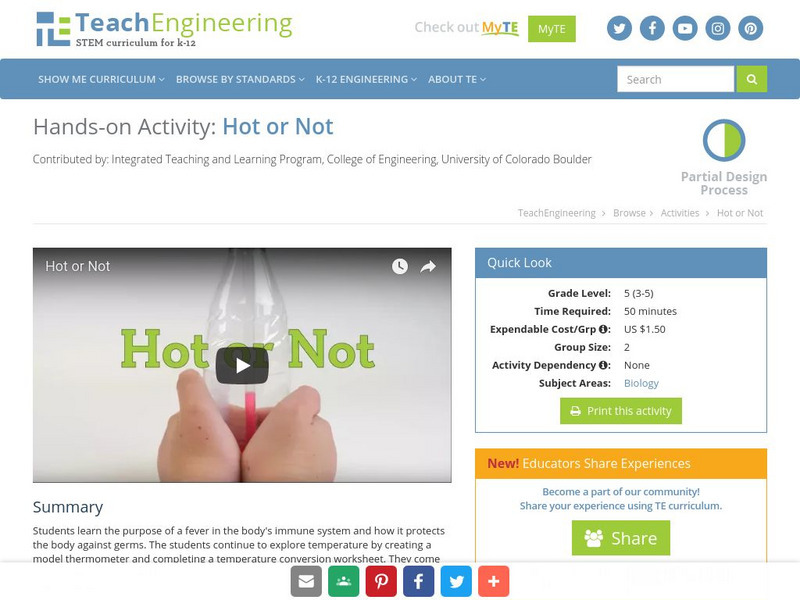Other
Graduating Engineer and Computer Careers Magazine: Biomedical Engineering
A career in biomedical engineering is profiled. What exactly is it? Education? Job opportunities? Learn more about this in demand career.
TeachEngineering
Teach Engineering: My Mechanical Ear Can Hear!
Students are introduced to various types of hearing impairments and the types of biomedical devices that engineers have designed to aid people with this physical disability.
TeachEngineering
Teach Engineering: No Valve in Vain
In this activity, students will design and create their own heart valves out of a variety of materials given to them, including: waterproof tape, plastic tubing, flexible plastic sheets, foam sheets, scissors, clay, etc. This activity...
TeachEngineering
Teach Engineering: Living With Your Liver
Students learn the function of the liver and how biomedical engineers can use liver regeneration to help people. Students test the effects of chemical toxins on a beef liver and how salt changes the liver's ability to break down these...
TeachEngineering
Teach Engineering: Bacteria Are Everywhere!
Through this activity, students are introduced to the concept of engineering biological organisms and studying their growth to be able to identify periods of fast and slow growth. Students learn that bacteria are found everywhere,...
TeachEngineering
Teach Engineering: Tracking a Virus
Students simulate the spread of a virus such as HIV through a population by "sharing" (but not drinking) the water in a plastic cup with several classmates. Although invisible, the water in a few of the cups will already be tainted with...
TeachEngineering
Teach Engineering: Fighting Back!
This lesson describes the major components and functions of the immune system and the role of engineers in keeping the body healthy (e.g., vaccinations and antibiotics, among other things). This lesson also discusses how an astronaut's...
TeachEngineering
Teach Engineering: Put Your Heart Into Engineering
This lesson contains background about the blood vascular system and the heart. Also, the different sizes of capillaries, veins, and arteries, and how they affect blood flow through the system. We will then proceed to talk about the...
TeachEngineering
Teach Engineering: Kidney Filtering
In this activity, students filter different substances through a plastic window screen, different sized hardware cloth and poultry netting. Their model shows how the thickness of a filter in the kidney is imperative in deciding what will...
TeachEngineering
Teach Engineering: Seeing the World Through a Different Lens
Students will participate in a variety of activities modeling different disabilities. After discussing their experiences, students work in teams to devise or improve on an adaptive device.
TeachEngineering
Teach Engineering: Seeing the World Through a Different Lens
Students will participate in a variety of activities modeling different disabilities. After discussing their experiences, students work in teams to devise or improve on an adaptive device.
TeachEngineering
Teach Engineering: Hot or Not
This activity explains what a fever is and how the immune system uses it to try and protect the body against germs. The students then explore temperature further by creating a model of a thermometer and completing a temperature...
American Institute of Biological Sciences
Action Bioscience: Primer on Ethics and Crossing Species Boundaries
Examine boundaries between science and ethics as scientists work with genetic testing and discovery.
Career Cornerstone Center
Sloan Career Cornerstone Center: Profiles of Physicists: Michelle O'brien
A brief career profile of Ms. Michelle O'Brien, a physicist for the ionizing radiation division at the National Institute of Standards and Technology. Can be downloaded in PDF format.


